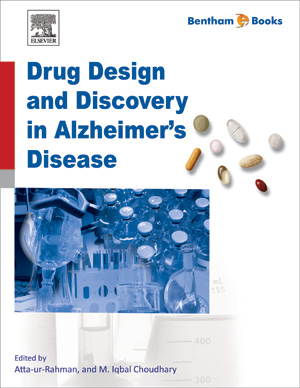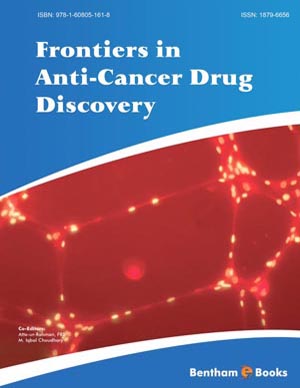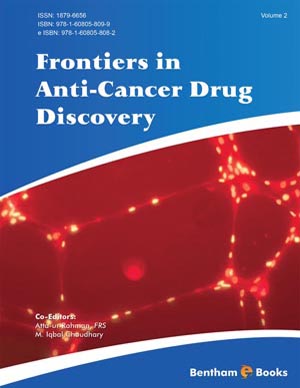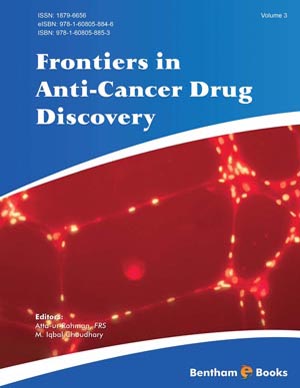Book Volume 5
Preface
Page: i-ii (2)
Author: Atta-ur-Rahman and M. Iqbal Choudhary
DOI: 10.2174/9789811423178121050002
The Effect of Sleep on Weight and Obesity Management
Page: 1-29 (29)
Author: Byung Soo Yoo, Steve D`Souza, Ankit Patel, Kevin Houston, Parth J. Parekh and David Johnson*
DOI: 10.2174/9789811423178121050004
PDF Price: $30
Abstract
Obesity is a global pandemic with far reaching implications. The overall trend of Americans who are classified as obese and morbidly obese continues to rise. Alongside, the cost of healthcare as it relates to obesity and obesity-related illness continues to rise, in fact, it has doubled over the past 10 years. Obesity-related illnesses include type 2 diabetes, cardiovascular diseases, chronic kidney disease, and chronic liver disease among others. Paralleling the obesity epidemic, sleep loss and dysfunction have emerged as a public health issue. Both obesity and sleep dysfunction share important pathophysiologic pathways, resulting in a persistent low-grade inflammatory state which ultimately contributes to chronic disease as part of the metabolic syndrome. This chapter outlines the role of sleep in the pathogenesis of obesity and reviews the potential therapeutic implications of restoring normal sleep function in patients with obesity and obesity-associated diseases.
AMPK as a Postulated Target for Metabolic Syndrome and Obesity
Page: 30-65 (36)
Author: Carolina Gomez-Llorente*, Francisco J. Ruiz-Ojeda, Azahara I. Rupérez and Concepción M. Aguilera
DOI: 10.2174/9789811423178120050001
PDF Price: $30
Abstract
The predominance of obesity is consistently rising worldwide. Development of obesity is intimately related with other chronic diseases such as type 2 diabetes and cardiovascular diseases. Treatment of obesity is achieved by losing weight, but to reach this, beyond strategies based on food deprivation, innovative therapeutic interventions are necessary. AMP-activated protein kinase (AMPK) is considered the master regulator of metabolism. AMPK is activated by a low cellular energy status. Activated AMPK promotes catabolic processes to generate ATP while inhibits the synthesis pathways (anabolism) requiring ATP for maintain the cellular energy homeostasis. Additionaly, AMPK is involved in other cellular processes (i.e. cell cycle regulation). The ability of AMPK to drive metabolism makes it a postulated target for the treatment of obesity, diabetes, inflammation and cancer. We review here recent knowledge about AMPK and its role in an obesity context. Furthermore, we provide an overview of the effect of different drugs on AMPK activity and the association between this effect and the treatment of obesity and its associated comorbidities.
Harnessing Addiction Neuroscience to Treat Obesity
Page: 66-123 (58)
Author: Diana Sketriene, Sarah S. Ch’ng and Robyn M. Brown*
DOI: 10.2174/9789811423178121050005
PDF Price: $30
Abstract
The prevalence and impact of obesity are staggering. It has reached pandemic proportions, over a third of the global population is overweight or obese (40 million are children). With >2.8 million deaths/year attributable to overweight/obesity, it is now the 5th leading cause of global deaths and is rapidly surpassing smoking as the number one killer in the industrialized world. Exciting pharmacotherapies for treatment of obesity showed only modest success in clinical trials and the most effective treatment, bariatric surgery, is reserved for selected patients and associated with risks of morbidity and mortality. Thus, the frontline treatment for obesity remains the promotion of lifestyle changes, which mainly relies on permanent changes in diet. Unfortunately, most people find it challenging to maintain calories deficit and eat less caloric food. Thereby it is crucial to understand why people overeat and why it is so difficult to resist the urge to eat “junk food” even in the absence of hunger. A growing body of research has identified striking similarities between attributes of addiction and pathological overeating. Imagery studies showed that stimuli associated with food or drugs and craving for them activate the same brain regions. As with drugs of abuse, overeating may be used as a method of self-medication in response to negative emotional states, such as depression, anxiety, loneliness, boredom and interpersonal conflict. Notably, an overlap exists in medication that influences intake of both food and drugs of abuse (e.g. topiramate, naltrexone). Moreover, human and animal studies have shown similar changes in neurochemistry (e.g. dopamine, endogenous opioids), synaptic plasticity (e.g. nucleus accumbens) and behaviour (e.g. increased impulsivity, compulsive intake, cognitive impairments) in obese and drug addicted subjects. This emerging evidence supports the hypothesis that the brain’s reward circuitry may be dysregulated in case of obesity. Therefore, we propose that the incorporation of addiction neuroscience into the conceptualization and treatment of pathological overeating has the potential to improve treatment outcomes. This chapter will review potential drug targets for treatment of excessive eating in obesity within an addiction neuroscience framework.
Current Treatment of Obesity versus the Next Generation of Anti-Obesogenic Drugs: An Ecologically and Sustainable Approach to Health
Page: 124-171 (48)
Author: Vera Elizabeth Closs*, Vilma Maria Junges, Luísa Scheer Ely Martines and Maria Gabriela Valle Gottlieb
DOI: 10.2174/9789811423178121050006
PDF Price: $30
Abstract
Obesity is currently recognized as an epidemic and one of the most important health problems worldwide. World Health Organization data indicates that in developing countries, obesity in adults is more frequent than malnutrition. More than 1.9 billion adults are overweight, with 650 million of these being obese. More than 200 million school-aged children are overweight, making this generation more likely to have a shorter productive life and life expectancy than their parents. This portion of the population has a greatly increased risk of developing cardiovascular disease, diabetes, dyslipidemia, hypertension, hepatic steatosis, certain types of tumor and infertility, negatively impacting their quality of life. Obesity can be prevented and is treatable with the adoption of a healthy and appropriate diet, and with regular physical exercise. However,lifestyle modification therapy for the obese population remains unsatisfactory. In addition, it is important to emphasize that obesity treatment presents better results when accompanied by a multidisciplinary team, using diet therapy, prescribed physical exercise, psychotherapy and drug therapy, according to the needs of each patient. Obesity is a multifactorial, complex, chronic and relapsing disease involving gene-environment interaction and should therefore be treated with a systemic and ecological approach. This is because many roles of intestinal microbiota in human health have recently been discovered, mainly in relation to weight gain or loss. Additionally, recent studies suggest that human gut microbiota may contribute to the regulation of multiple neurochemical and neurometabolic pathways through complex systems that interact and interconnect the gastrointestinal tract, skin, liver, and other organs, such as the central nervous system. The brain and intestine form a complex nervous, endocrine and immune bidirectional communication axis, involving neurotransmitters and neuromodulators. Changes in one organ will affect other organs, and disturbances in the composition and number of intestinal microorganisms can affect the enteric and central nervous systems. Alterations in intestinal microbiota may increase intestinal barrier permeability, raising the risk of developing chronic diseases, like obesity. Furthermore, the imbalance between gut microbiota and its host leads to dysbiosis, which, in turn, contributes to the establishment of an inflammatory and oxidative process, impaired glucose metabolism, insulin resistance, obesity, increased risk of developing of metabolic syndrome, type 2 diabetes, inflammatory bowel, autoimmune diseases, and cancers. Studies have shown that less-industrialized populations, such as those in Africa, present a more diversified gut microbiota that is richer in terms of bacterial genera, which encode enzymes that hydrolyze cellulose and xylan. This finding suggests these individuals have a fiber-rich diet, a different situation from industrialized populations who obtain energy from an ultra-processed diet, rich in fats, salt, sugars and preservatives, and who present a high prevalence of obesity and other chronic diseases. In this sense, it is fundamental to reflect on what type of anti-obesity drug should be developed to treat this pathology, as most of these drugs act on the central nervous system and, therefore, interfere in communication between the brain and intestine. It is important to develop an anti-obesity drug that acts not only on appetite control and on increased satiety, but also engages with and is friendly to intestinal microbiota, via increased diversity of this ecosystem, decreased fat storage and chronic oxidation inflammation, and correct modulation of the immune system. Nonetheless, we must not forget that obesity is a complex and multifactorial disease, and that its drug treatment must be combined with a healthy and adequate diet, physical exercise and cognitive-behavioral therapy. Within this context, this chapter aims to promote reflection around this theme and to provide the theoretical foundation for development of the next generation of anti-obesogenic drugs.
Leptin and Leptin Sensitizers for the Treatment of Obesity-Related Conditions
Page: 172-209 (38)
Author: Nujen Colak Bozkurt and Tuncay Delibasi*
DOI: 10.2174/9789811423178121050007
PDF Price: $30
Abstract
The prevalence of common obesity continues to increase despite very serious efforts to prevent and treat it. Obesity leads to diabetes and cardiovascular disease, which are still among the most important causes of death in developed countries. Leptin replacement therapy has been successfully and effectively used in patients with complete or partial leptin-deficient states. The discovery of leptin inspired a great hope, but the expected success of leptin therapy has not been achieved for the treatment of common obesity. After understanding leptin resistance as the basis of common obesity, research has shifted to find leptin sensitizers that can be used in humans. Despite extensive research, there is still no effective, widely used leptin sensitier available for the treatment of common obesity. However, leptin sensitizers offer promise as approved medications for the clinical treatment of common obesity. The above-mentioned topics are explained in more detail in this chapter.
MicroRNAs as Targets for the Management of Obesity
Page: 210-248 (39)
Author: Mitra Nourbakhsh*
DOI: 10.2174/9789811423178121050008
PDF Price: $30
Abstract
Obesity is a global health problem and one of the major causes of chronic disorders, such as metabolic syndrome, insulin resistance, type-2 diabetes, nonalcoholic fatty liver disease, and cardiovascular diseases. Obesity is not only an expansion of adipose tissue but also is accompanied by numerous biochemical changes. For example, several adipokines are secreted from adipose tissue and their levels are altered in obesity. The same is true for many metabolic regulators and epigenetic modifiers, such as microRNAs and inflammatory cytokines. MicroRNAs are short noncoding RNA molecules that generally suppress the expression of various genes by binding to the untranslated regions of their target mRNAs. There is growing evidence that metabolic diseases are associated with dysregulation of microRNAs. These molecules are potentially valuable biomarkers that can assist in accurate diagnostic and/or prognostic procedures as well as drug design. Therefore, this chapter, attempted to review the previous findings regarding the relationship between microRNAs and obesity and its associated metabolic alterations.
Introduction
Obesity is a complex health problem, caused by a number of factors such as excessive food intake, lack of physical activity, genetic predisposition, endocrine disorders, medications and psychiatric illnesses. The incidence of obesity among populations in both the developing and the developed world has reached epidemic proportions. In response to this, efforts to control and treat obesity have also been vigorously pursued, ranging from activities focused on raising awareness about lifestyle changes to the discovery and development of safe and effective anti-obesity drugs. Anti-obesity Drug Discovery and Development is a book series focused on this very important area of healthcare research. Each volume presents insightful updates on pharmaceutical research and development for clinical researchers and healthcare professionals involved in obesity treatment programs. The fifth volume of this series is a compilation of 6 reviews of interesting topics on the subject that highlight different aspects of obesity treatment and management, some of which are novel approaches. Topics covered in this volume include: - the effect of sleep on weight and obesity management - AMPK as a postulated target for metabolic syndrome and obesity - Harnessing addiction neuroscience to treat obesity - Current treatment of obesity versus the next generation of anti-obesogenic drugs: an ecologically and sustainable approach to health - Leptin and leptin sensitizers for the treatment of obesity related conditions - MicroRNAs as targets for the management of obesity






















